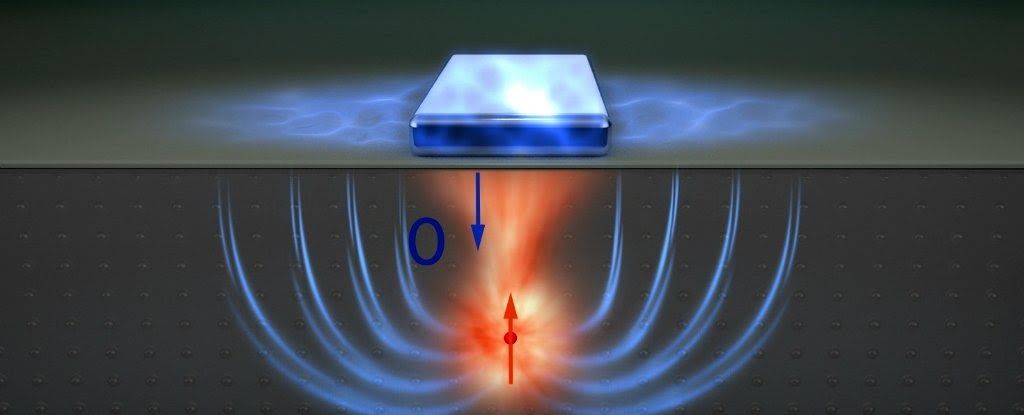A push to exploit the country’s lead in the sector risks being tripped up by regulation, sparking fears it could lose out to a rival.



“North Korea claims it is now part of the thermonuclear club, after successfully testing on Sunday a miniaturized hydrogen bomb capable of fitting on an intercontinental ballistic missile (ICBM).”
“Assuming the reports are true, the North’s most recent nuclear detonation wasn’t just another test on a growing list of Kim Jong Un’s provocations. It was a major escalation in the nuclear face-off on the Korean peninsula. The world’s most belligerent rogue state going from fission to fusion weapons is ominous to say the least.”

BOSTON (AP) — IBM is planning to spend $240 million over the next decade to create an artificial intelligence research lab at MIT.
Massachusetts Institute of Technology on Thursday announced the formation of the new MIT-IBM Watson AI Lab. It will support joint research by IBM and MIT scientists.
Its mission will include advancing the hardware, software and algorithms used for artificial intelligence. It also will tackle some of the economic and ethical implications of intelligent machines and look at its commercial application for industries ranging from health care to cybersecurity.

Australian researchers have designed a new type of qubit — the building block of quantum computers — that they say will finally make it possible to manufacture a true, large-scale quantum computer. Broadly speaking, there are currently a number of ways to make a quantum computer. Some take up less space, but tend to be incredibly complex. Others are simpler, but if you want it to scale up you’re going to need to knock down a few walls.
On August 1 2017, the value of a Bitcoin was at $2,750 US dollars. Today, just over one month later, it is poised to leap past $5,000 per unit. With this gain, many people are asking if Bitcoin has any genuine, inherent value. Is it a pyramid scheme? —Or is it simply a house of cards ready to collapse when the wind picks up?
In a past article, I explained that Bitcoin fundamentals ought to place its value in the vicinity of $10,000.* (At the time, it was less than $450, and had even fallen to $220 in the following year).
For many consumers viewing the rising interest in Bitcoin from the stands, there is great mystery surrounding the underlying value. What, if anything, stands behind it? This is a question with a clear and concise answer. In fact, it has a very definitive and believable answer—but it is easiest to understand with just a little bit of historical perspective.
At one time, G7 fiat currencies were backed by a reserve of physical Gold or the pooling or cross-ownership of other currencies that are backed by gold. That ended in 1971 when the Bretton Woods agreement was dissolved by president Richard Nixon in Ithaca NY.
Today, US currency is backed by “The good faith and credit of the American worker” (This is the government explanation of intrinsic value). But in truth its future value is loosely tied to one simple question: Does the typical vendor or consumer (for example, someone accepting a $20 bill in exchange for a movie ticket or 2 large pizzas) expect it to buy these same things in the next few months?
A considerable number of speculative components contribute to the answer. For example:
This list is not exhaustive, but all constituents boil down to two fundamental concepts: Supply-and-demand and How long will demand last?
The dollar is an invention of a transient government. Even with a long history and complex banking framework, it is no more real than Bitcoin. Supply and demand for any commodity is based on popular recognition, anti-counterfeit features, innate desire and public goodwill. The real question is what contributes to the desire to own or spend Bitcoin?
The answer is that Bitcoin is backed by something far more reliable and trustworthy than the transient whim of elected legislators. It is backed by something that carries more weight than the US government. What could possibly guaranty the value of a Bitcoin? After all, it does not convey ownership in gold, and it has no redemption guarantee. There is no engraving of Caesar on the coin. (In fact, there is no coin at all!)…
Answer: Bitcoin is backed by math, a firm cap, a completely transparent set of books, and the critical mass of a two-sided network. Although it can be taxed (like any asset), it can be owned and transferred with impunity and without recourse. These may not seem like critical components of intrinsic value, but they are. In fact, they define intrinsic value in the modern era.
Related:
Philip Raymond co-chairs CRYPSA, produces The Bitcoin Event, edits A Wild Duck and is keynote at this year’s Digital Currency Summit in Johannesburg.


Now, Symantec reports, the group has resumed operations, apparently working since late 2015 to investigate and penetrate energy facilities in at least three countries: the US, Turkey and Switzerland.
“The Dragonfly group appears to be interested in both learning how energy facilities operate and also gaining access to operational systems themselves, to the extent that the group now potentially has the ability to sabotage or gain control of these systems should it decide to do so,” the cybersecurity firm warns.
Dragonfly’s methods are varied, but all its attacks seem to be focused on researching the inner workings of energy firms. It has been seen sending malicious emails with attachments that leak internal network credentials, which are then used to install backdoors on the network allowing the hackers to take control of computers and systems. They’ve also been seen seeding fake flash updates to install the backdoors and carrying out “watering hole” attacks, hacking third-party websites that were likely to be visited by people working in the energy sector.

Early this morning (Sept. 6), the sun released two powerful solar flares — the second was the most powerful in more than a decade.
At 5:10 a.m. EDT (0910 GMT), an X-class solar flare — the most powerful sun-storm category — blasted from a large sunspot on the sun’s surface. That flare was the strongest since 2015, at X2.2, but it was dwarfed just 3 hours later, at 8:02 a.m. EDT (1202 GMT), by an X9.3 flare, according to the National Oceanic and Atmospheric Administration’s Space Weather Prediction Center (SWPC). The last X9 flare occurred in 2006 (coming in at X9.0).

It’s de rigeur for the many of the richest of the rich to tout the benefits of giving cash handouts to all American citizens, in part as a way to end poverty. The idea, called universal basic income (UBI), is for every individual to be paid a regular sum of money regardless of employment status.
One of the tech elite who has an interest in universal basic income is self-made multimillionaire and Y Combinator President Sam Altman. “Eliminating poverty is such a moral imperative and something that I believe in so strongly,” Altman tells CNBC Make It.
“There’s so much research about how bad poverty is. There’s so much research about the emotional and physical toll that it takes on people.
The ‘Iron Man’ exoskeleton that can let disabled children walk again.